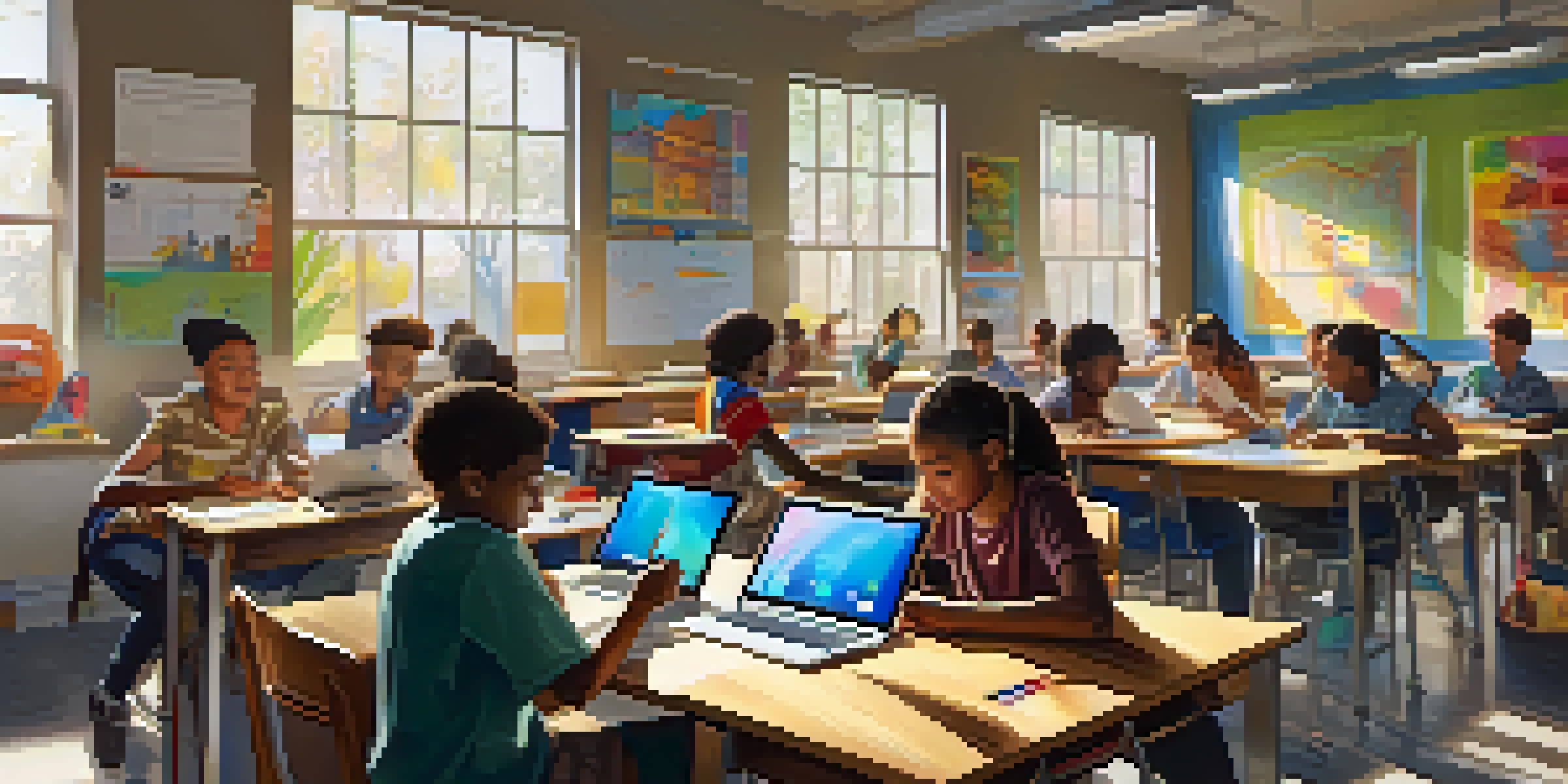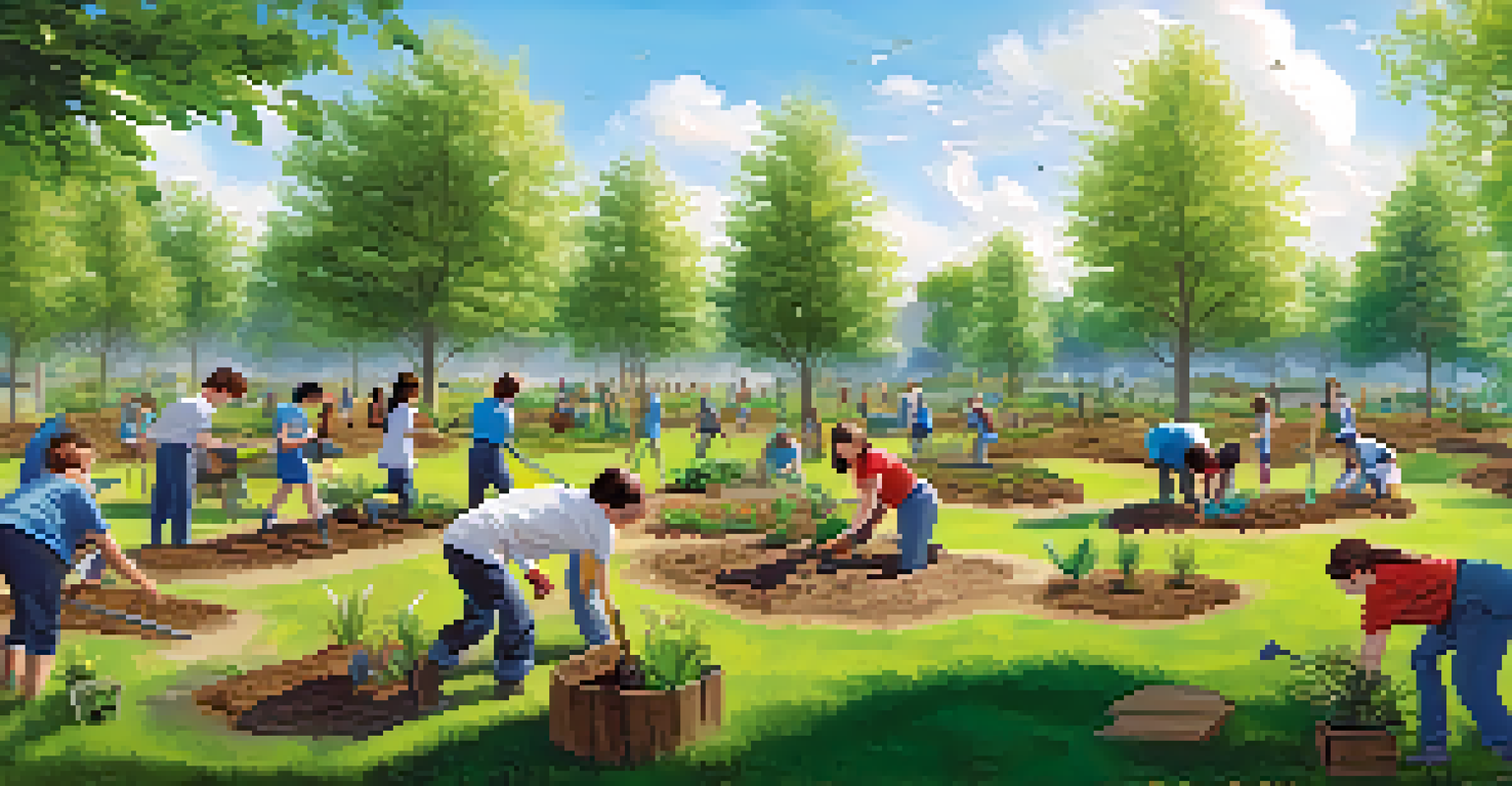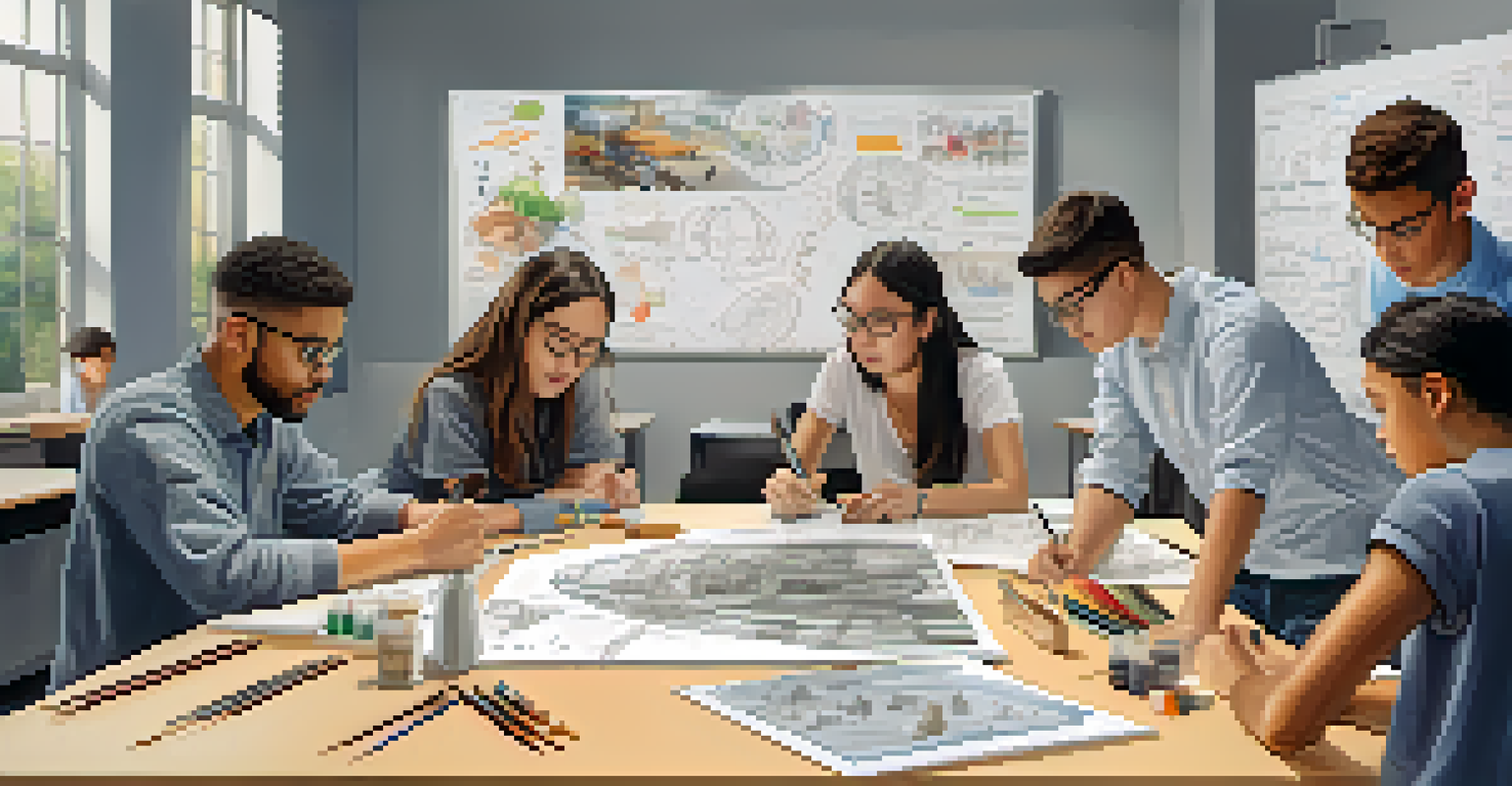Creative Problem Solving in Education: Encouraging Innovation

Understanding Creative Problem Solving in Education
Creative problem solving is a vital skill for students, enabling them to tackle challenges with innovative solutions. In an educational context, this means encouraging students to think beyond traditional methods and embrace creativity in their approach to learning. With the rapid changes in our world, cultivating these skills is more important than ever, as they prepare students for future roles that require adaptability and critical thinking.
Creativity is thinking up new things. Innovation is doing new things.
This approach not only enhances students' learning experiences but also equips them with tools to navigate complex problems in real life. By fostering a creative mindset, educators can help students view challenges as opportunities rather than obstacles. This shift in perspective can lead to more engaged, motivated learners who are eager to explore and innovate.
Ultimately, understanding and implementing creative problem solving in education creates a vibrant learning environment where students feel empowered to express their ideas and collaborate with peers. This sets the stage for a generation of thinkers ready to tackle the challenges of tomorrow.
The Role of Educators in Encouraging Innovation
Educators play a crucial role in nurturing an environment that promotes creative problem solving. By modeling innovative thinking and providing students with opportunities to experiment, teachers can inspire a culture of curiosity and exploration. This can be achieved through project-based learning, where students are encouraged to tackle real-world issues collaboratively.

Moreover, educators should adopt a growth mindset, emphasizing that mistakes are part of the learning process. When students feel safe to fail and try again, they are more likely to take risks and think outside the box. Encouraging this mindset fosters resilience, an essential trait for innovative problem solvers.
Fostering Creative Mindsets
Encouraging students to view challenges as opportunities enhances engagement and innovation.
Additionally, integrating technology and diverse resources can help broaden students' perspectives and inspire creativity. By exposing students to various tools and methodologies, educators can facilitate a learning experience that encourages exploration and originality.
Creating a Supportive Learning Environment
A supportive learning environment is pivotal for students to thrive in creative problem solving. This includes fostering collaboration among students, allowing them to share ideas and work together on projects. When students collaborate, they can build on each other's strengths and perspectives, leading to more innovative solutions.
The greatest danger in times of turbulence is not the turbulence; it is to act with yesterday's logic.
Moreover, a classroom that encourages open dialogue and values diverse opinions can significantly enhance creativity. Students should feel comfortable voicing their thoughts without fear of judgment, which can lead to richer discussions and idea generation. This sense of community not only improves problem-solving skills but also nurtures interpersonal skills essential for future success.
Creating such an environment involves not just physical space but also emotional support from educators. When teachers express genuine interest in their students' ideas and creativity, it reinforces a sense of belonging and encourages them to take ownership of their learning.
Integrating Real-World Problems into the Curriculum
Integrating real-world problems into the curriculum can significantly enhance students' creative problem-solving abilities. When students engage with issues that matter in their communities or the global landscape, they are more likely to invest emotionally in their learning. This connection can inspire innovative thinking as they seek solutions to these challenges.
For instance, a class project focused on environmental sustainability allows students to brainstorm and implement ideas that could have a tangible impact. This hands-on experience not only sharpens their problem-solving skills but also instills a sense of responsibility and agency among students.
Importance of Collaboration
A supportive learning environment that promotes teamwork leads to richer ideas and solutions.
By aligning learning objectives with real-world challenges, educators can create meaningful and relevant learning experiences. This approach not only prepares students for the workforce but also encourages them to become active, thoughtful contributors to society.
Encouraging Interdisciplinary Collaboration
Interdisciplinary collaboration is another effective way to promote creative problem solving in education. By breaking down the barriers between subjects, students can see the connections between different fields of study, leading to a more holistic understanding of problems. This integrated approach can stimulate innovative thinking as students draw on diverse knowledge and skills.
For instance, a project that combines science, art, and technology can allow students to explore environmental issues creatively. By engaging in such collaborative projects, students learn to appreciate different perspectives and approaches, fostering a spirit of teamwork and innovation.
Encouraging interdisciplinary collaboration not only enriches the learning experience but also prepares students for the complexities of real-world problems, which often require input from various fields. This preparation is essential for developing well-rounded individuals who can think critically and innovate across disciplines.
Utilizing Technology to Enhance Problem-Solving Skills
Technology can serve as a powerful tool to enhance creative problem-solving skills in education. With access to various digital resources, students can explore new ways to approach challenges and collaborate in innovative ways. For example, utilizing virtual reality can immerse students in scenarios that require critical thinking and creativity.
Moreover, online platforms and apps designed for brainstorming and project management can facilitate collaboration among students, regardless of their physical location. This not only broadens their horizons but also prepares them for the increasingly digital world they will enter after graduation.
Real-World Applications
Integrating real-world problems into the curriculum motivates students and enhances their problem-solving skills.
By integrating technology into the learning process, educators can create dynamic learning experiences that inspire creativity and innovation. This equips students with the skills necessary to navigate the complexities of the modern world and encourages them to become lifelong learners.
Measuring Success in Creative Problem Solving
Measuring success in creative problem solving can be challenging but is essential for understanding its impact on student learning. Traditional assessments may not capture the nuances of innovative thinking, so educators must consider alternative methods. For instance, project-based assessments can provide insight into students' creative processes and problem-solving abilities.
Additionally, incorporating self-reflection and peer assessments can help students evaluate their own and others' contributions to collaborative projects. This not only fosters a sense of accountability but also encourages students to articulate their thought processes and outcomes clearly.

Ultimately, measuring success in creative problem solving requires a multifaceted approach. By using diverse assessment methods, educators can gain a more comprehensive understanding of students' skills and foster a culture of continuous improvement and innovation.